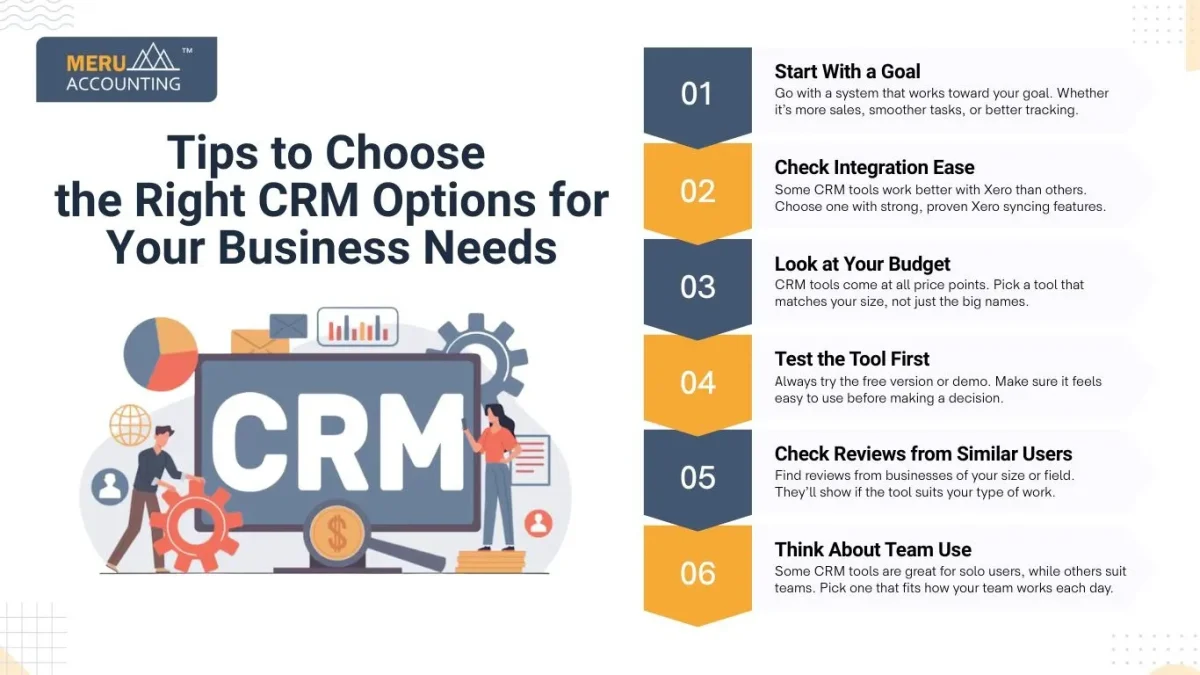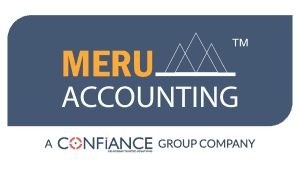Xero and CRM: How the Use of Xero Improves CRM Options for Small Businesses
Small businesses grow best when they use smart tools. One powerful combo is using Xero and CRM software together. With the right setup, you can manage customers and accounts in one place. The use of Xero helps track money, while a CRM for Xero keeps client data and sales under control. When you combine both, you gain time, accuracy, and better customer care.
In this blog, we explore how Xero CRM software improves daily business. We will explore how the use of Xero helps small businesses improve their CRM options, how integration works, and what to look for when choosing a tool.
Why CRM Matters for Small and Growing Businesses
Small businesses often have limited staff and time. They need smart tools to manage leads, talk to clients, and track deals. A CRM tool helps with all these tasks by storing customer data in one place. This helps teams work better and faster. Strong customer support helps every business grow. As a business grows, tracking customer details, calls, orders, and bills becomes hard. CRM software plays a big role, especially when it works with Xero.
Key Benefits of CRM Tools
- Track customer details with ease
- Follow up on leads without delay
- Get reminders for key follow-ups
- View reports on sales performance
- Help manage client needs in one place
Strong customer support helps every business grow. As businesses expand, tracking customer details, calls, orders, and bills becomes harder. CRM options make this easier, especially when they work with Xero.
What Does a CRM Do?
CRM tools keep emails, contact info, notes, and past purchases in one system. When integrated with Xero, you also get payment history, invoice status, and financial notes added to customer profiles. This creates a full picture for better service.
CRM with Xero Integration Helps You:
- See both sales and finance data at once
- Track client status and payment details
- Give better support and faster replies
- Work as one team across sales and accounts
Understanding the Use of Xero in Business Operations
Xero is made for small firms that want simple, cloud-based accounting. It can handle sales, invoices, bank feeds, bills, and reports in one place.
Key Features of Xero
- Send invoices: You can make and send an invoice in seconds. Your client gets it fast, and you’ll know when they see it.
- Track cash flow: Xero gives a live view of your money in and out. It helps you track how your business is doing each day.
- Manage payroll: You can handle payslips, tax, and super with ease. Staff get paid on time with no errors.
- Match bank feeds: Xero connects to your bank. It pulls in data and matches it with your records to save hours.
- Create financial reports: Get clear, real-time reports to check profits, costs, and trends. It helps you make better plans in less time.
The use of Xero brings ease and speed to your accounting. It helps you keep your numbers clean and updated without long hours of data entry.
What Is Xero CRM Software?
Xero CRM software is not a single tool. It means using CRM apps that link well with Xero. These apps pull your financial data and mix it with your customer data. When sales and finance work together, both teams save time. Sales sees who has paid. Finance sees what is in the pipeline. From the first chat to the final payment, CRM tools linked with Xero help you follow each step with ease. Your team can see live updates. This means better service and quicker replies to client questions.
Benefits of Xero CRM Software:
- Live updates on client activity
- One view of sales and payment status
- Fewer errors due to synced data
- Faster response to customer queries
Top CRM for Xero Integrations to Consider
Choosing the right CRM for Xero makes your team more efficient. These tools offer useful features to manage client data and boost productivity.
1. HubSpot CRM
- HubSpot CRM offers invoicing insights inside the dashboard when integrated with Xero. It helps teams view contacts, deal status, and payment history in one place.
2. Zoho CRM
- Zoho CRM tracks deals, automates tasks, and manages contacts. When paired with Xero, it shows invoice data, balances due, and contact status instantly.
3. Insightly
- Insightly supports service-based businesses by linking tasks, projects, and customer records. Xero integration adds financial visibility to CRM workflows.
4. Capsule CRM
- Capsule is simple yet powerful. It pulls invoice and contact data from Xero into your CRM so teams can work faster and keep customer details updated.
5. Salesforce (with Add-ons)
- Salesforce connects to Xero through add-ons. It’s perfect for large companies needing strong CRM tools plus financial sync features.
Benefits of Using Xero and CRM Together
Integrating Xero and CRM boosts your operations. It improves accuracy, saves time, and gives a clear view of customer and financial performance.
Save Time on Data Entry
Data auto-syncing reduces manual tasks. Once a lead is added to your CRM, their details sync with Xero, eliminating duplicate entry and ensuring consistency.
Improve Cash Flow
Teams get alerts for overdue invoices. CRM allows direct invoice follow-up, encouraging faster payments and keeping cash flow healthy.
Make Better Choices
With insights from CRM and Xero, you spot profitable clients, slow payers, and best-selling products. This helps refine your sales strategy.
Stronger Sales Process
Sales reps use financial history to focus on high-value leads. Linked records help prioritize efforts and close more deals with less effort.
Happier Clients
Client details, support history, and invoices are all in one place. You solve issues faster and serve better. CRM and Xero give teams a full view of the customer.
Less Admin Stress
Cut down the time spent on copying and fixing data. Automation with Xero reduces your admin load. Everyone saves time.
Setting Up CRM for Xero in Easy Steps
Use the steps below to set up your Xero CRM software without hassle. Most systems follow a simple process that works even for non-tech teams.
Step 1: Pick the Right CRM for Xero
Check your workflow needs and budget. Choose a CRM that offers a direct Xero connection with features that match your business size.
Step 2: Sign In and Connect
Log in to both platforms and authorize access. Your CRM will request access to Xero—once allowed, the data sync begins.
Step 3: Sync Your Data
Sync contacts, invoices, and past deals. Choose what data to pull and push between the tools.
Step 4: Set Rules and Alerts
Create triggers for overdue bills, follow-ups, or deal updates. These alerts keep teams informed and clients engaged.
Step 5: Train Your Team
Show team members how to use the CRM-Xero setup. Simple walkthroughs or videos help them understand how to work efficiently.
Common Mistakes to Avoid When Using Xero and CRM
Even the best tools can cause problems if not used correctly. Here are some errors to watch out for when using Xero and CRM tools.
Don’t Skip Sync Settings
Review sync preferences before going live. Over-syncing slows down your system and may pull in unnecessary data.
Train All Users
Everyone using the system should know its functions. Training ensures all teams benefit from CRM and Xero integration.
Avoid Manual Data Fixes
Editing synced fields directly may cause data mismatch. Always update records within the connected systems to ensure proper sync.
Check Integrations Often
Tools update often. Check if the link between Xero and CRM is still working as expected.
Tips to Choose the Right CRM Options for Your Business Needs
Picking a CRM that fits your goals is key. Here are some points to help:
1. Start With a Goal
Go with a system that works toward your goal. Whether it’s more sales, smoother tasks, or better tracking.
2. Check Integration Ease
Some CRM tools work better with Xero than others. Choose one with strong, proven Xero syncing features.
3. Look at Your Budget
CRM tools come at all price points. Pick a tool that matches your size, not just the big names.

4. Test the Tool First
Always try the free version or demo. Make sure it feels easy to use before making a decision.
5. Check Reviews from Similar Users
Find reviews from businesses of your size or field. They’ll show if the tool suits your type of work.
6. Think About Team Use
Some CRM tools are great for solo users, while others suit teams. Pick one that fits how your team works each day.
Real-Life Examples of Small Businesses Using Xero with CRM Tools
Each example below shows how the use of Xero with a CRM tool solved real problems for small businesses:
1. A Freelance Designer
Sarah used Capsule CRM and Xero. She linked client chats, project quotes, and bills. This saved time and helped her get paid faster.
2. A Small Coffee Supply Business
This firm used Zoho CRM and Xero. Their sales team tracked leads while the accounts team stayed in sync. It improved cash flow and reduced missed follow-ups.
3. A Local IT Services Firm
They used Insightly with Xero. Their support team got instant client data, payment history, and project status. It led to better service and happier clients.
How the Use of Xero Enhances CRM Integration
When your CRM and Xero work well together, you unlock great value.
1. Instant Updates Across Platforms
When a record changes in Xero or CRM, both update at once. No need to enter data twice or check errors.
2. Smart Lead to Client Flow
CRM turns leads into deals, and Xero sends the bill. You move from interest to income in fewer steps.
3. Easier Invoice Tracking
From the CRM, you see who was billed and who paid. No need to jump between tools or ask accounts.
4. Time Saved on Admin
You don’t waste time copying information. The use of Xero with CRM automates your data flow.
5. Stronger Planning Tools
The CRM shows leads; Xero shows revenue. Together, they help you plan sales goals with real data.
The use of Xero with CRM tools creates better workflows. It makes your business faster, smarter, and more client-focused. Small businesses gain a strong advantage when they combine CRM and Xero.
At Meru Accounting, we help small firms get the best from Xero and guide them to pick the best CRM options. We help set up the best options to keep your systems running smoothly.
FAQs
- What are the best CRM options for small businesses using Xero?
Capsule and Zoho are great picks. They are simple, low-cost, and sync well with Xero.
- Is it safe to link Xero with CRM tools?
Yes. Most top CRM tools use secure links. Just follow standard safety steps.
- Will Xero and CRM work for solo workers?
Yes. Many freelancers and small teams use this setup to improve their workflow and save time.
- How do I choose the right CRM for Xero?
Look for CRM options that match your goals, budget, and team size. Make sure it integrates well with Xero.
- How much does Xero CRM software cost?
The cost depends on the CRM tool you choose. Many offer free trials or low-cost plans for small teams.








